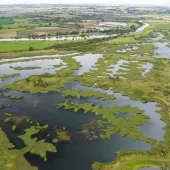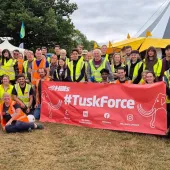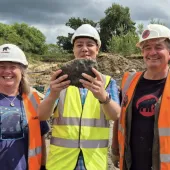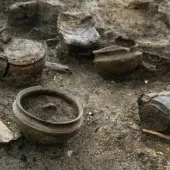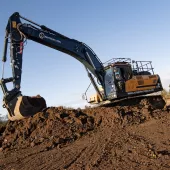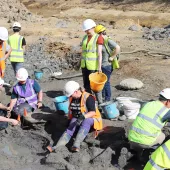Significant archaeological finds at Baker’s Hole
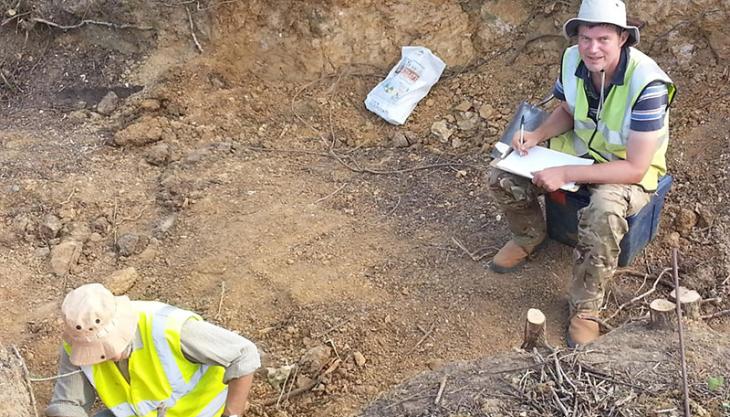
Lafarge Tarmac site helping to unlocking the secrets of early Neanderthals in Britain
IMPORTANT archaeological investigations have taken place recently at Lafarge Tarmac’s Baker’s Hole site in Ebbsfleet, Kent. In conjunction with Natural England and English Heritage, the company has carried out vegetation clearance that has given archaeologists the chance to conduct further research at this important Stone Age site.
The main aims of the research were to identify where important deposits survive and to see if these contained archaeological remains. One flint artefact was recovered and a number of sediment samples were examined for microscopic remains, such as snail shells and vole bones, which can shed light on the age of the sediments and the climate that prevailed when they were laid down.
The Stone Age period was when early Neanderthals were colonising Britain, and Baker’s Hole is recognized as the country’s foremost location with evidence of their distinctive form of Stone Age technology – making flint tools by the so-called Levalloisian method.
The site contains undisturbed evidence of their presence together with a rich diversity of large mammal bones. This is especially important as it sheds light on early human occupations of the area between 250,000 and 200,000 years ago, which are extremely rare in Britain.
The site is unusual in being one of the very few non-cave Stone Age sites on the national list of protected ancient monuments. It is also a Site of Special Scientific Interest (SSSI) on geological grounds. These listings have ensured its conservation in conjunction with the adjacent development of the Ebbsfleet International station and High Speed 1.
Jonathan Toyn, senior estates manager with Lafarge Tarmac, said: ‘We’re very pleased to be working with Natural England and English Heritage to safeguard and enhance the geological SSSI, and we look forward to our future partnership at this site.’
Dr Francis Wenban-Smith, of the Department of Archaeology, University of Southampton, who led the fieldwork, added: ‘I can’t wait to start analysing the results from this new phase of work. This small patch of ground has the potential to tell us so much about when and how Neanderthals first came into Britain. I am very grateful to Lafarge Tarmac, English Heritage and Natural England for supporting this project.’



